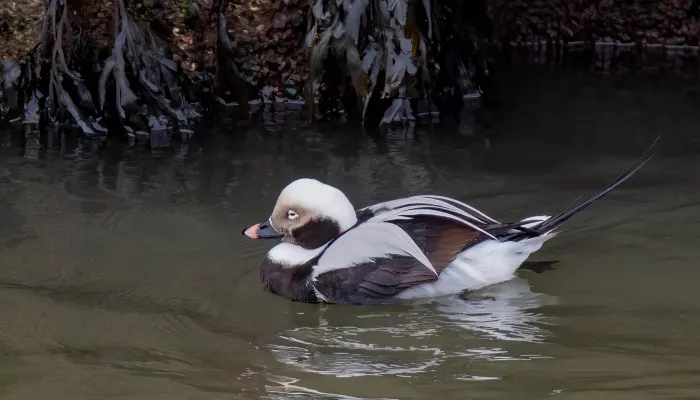| Statistics | |
| Length: | 44cm |
| Wingspan: | 76cm |
This dainty seaduck is a winter visitor to our coasts, particularly in northern and eastern Scotland.
About
Long-tailed ducks breed in the Arctic, on tundra pools and marshes as well as coastal islands. They spend the winter on the sea, often forming large flocks. They can be found far from shore, but will visit coasts, including around the UK. Here long-tailed ducks tend to be most numerous around Scotland, and down the east coast of northern England. They're typically found in sheltered bays and sometimes harbours. Occasionally, long-tailed ducks turn up on inland lakes and reservoirs, usually favouring deep water. A few non-breeding birds may remain around our coasts through the summer.
Long-tailed ducks dive for food. They're capable of reaching depths of up to 60 metres. They have a varied diet, which includes molluscs like cockles and clams, ragworms, crustaceans, small fish, and sometimes even fish eggs. Winter flocks are usually very active, with birds regularly diving or taking off and flying short distances. Males will also display to females, throwing their head back and squawking.
How to identify
Long-tailed ducks look very different throughout the year. Adult males can always be recognised by their incredibly long, black tail. In autumn, males are largely white, with grey and black on the body and wings. They have a mostly white head, with a dark smudge on the cheek, and a dark beak with a pink band across it. Over winter they develop more patterning on the face, with a grey-brown patch surrounding the eye. In summer, the breast and face become black, but they still have a grey-brown patch around the eye. They also develop rich brown feathers on the back.
Females are brown and white. They have a much shorter tail than males and no pink patch on their blue-grey beak. In autumn and winter they have a white head with a dark cap and cheek patch. In summer, the dark markings become more extensive, covering most of the head.
Juveniles are mostly brown when they're young, but by autumn look a lot like adult females. Young males are usually whiter than females and quickly develop the distinctive pink patch on the beak.
Did you know?
In the Northern Isles of Scotland, the long-tailed duck is known as the "calloo" for the noises it makes.

